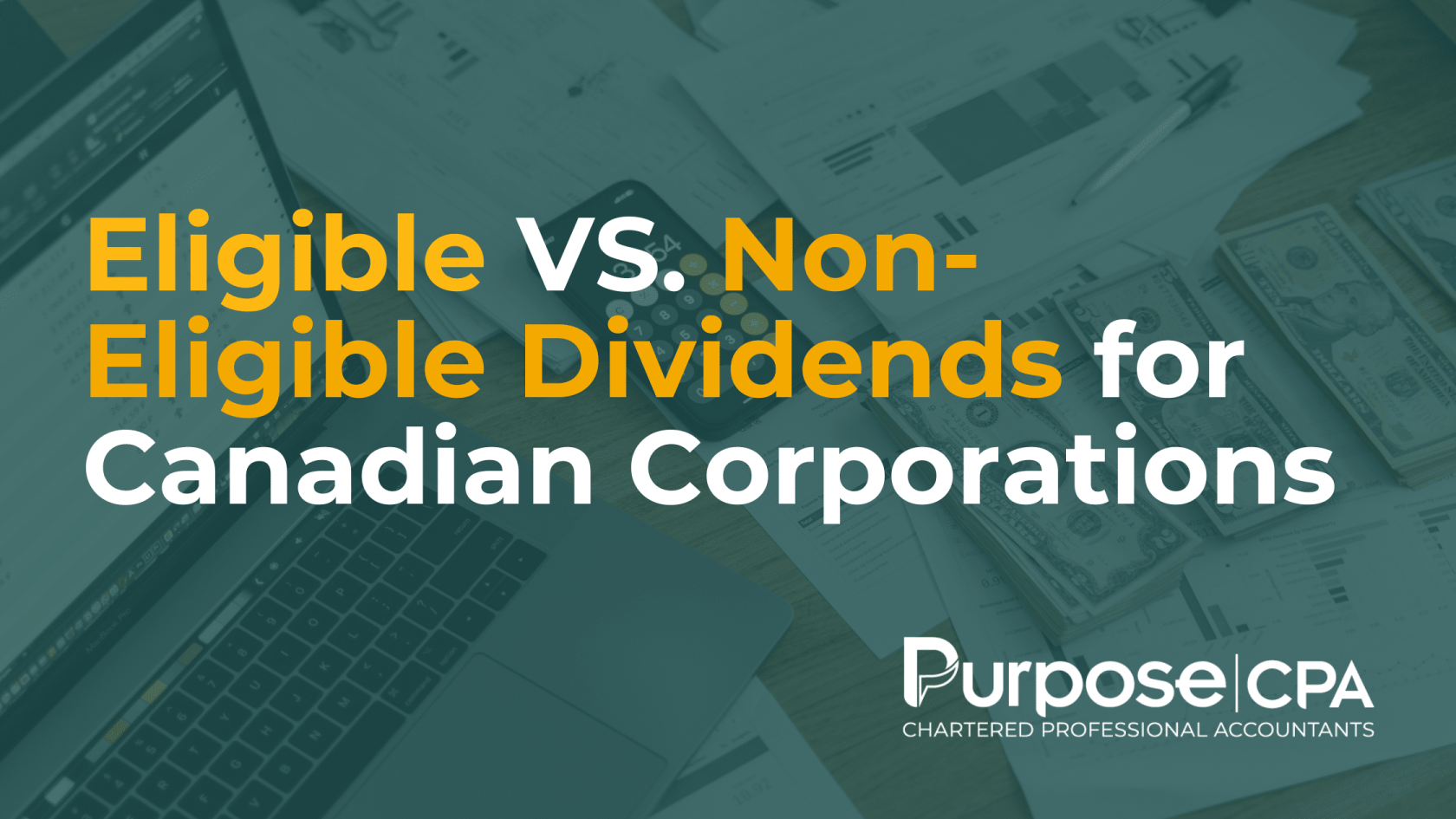In Canada, there are both eligible and non-eligible dividends which are taxed are different rates and have different calculations in your personal tax returns. Small business owners with growing businesses should be aware of the differences as it will have a financial impact on your business and personal taxes.
Who’s it for?
Small and medium-sized business owners
Canadian-controlled private corporations (CCPC)
Entrepreneurs looking to optimize their taxes
Why does this matter to me?
Understanding the difference between eligible and non-eligible dividends matters because it can impact your tax liabilities. Incorrectly reporting dividends may result in tax penalties.
TLDR:
In Canada, eligible dividends are taxed at a lower rate in your personal tax return as more taxes were paid on the income earned in the corporation. Non-eligible dividends are taxed at a higher rate in your personal tax return as the income earned was subject to lower taxes in the corporation.
Eligible dividends and non-eligible dividends are two types of dividends that Canadian corporations can issue to their shareholders. The key difference between these two types of dividends is how they are taxed.
Eligible Dividends
Eligible dividends are dividends that are paid out of a corporation’s earnings that have been taxed at the general corporate income tax rate. These dividends are generally taxed at a lower rate than non-eligible dividends, as the recipient of the dividend is entitled to a dividend tax credit. This credit is designed to account for the corporate income tax that has already been paid by the corporation on the earnings used to pay the dividend.
Non-Eligible Dividends
Non-eligible dividends, on the other hand, are dividends paid out of a corporation’s earnings that have been taxed at a lower corporate income tax rate, such as income earned from the small business tax rate. As a result, non-eligible dividends are generally subject to higher tax rates than eligible dividends. This is because the dividend tax credit is not as generous for non-eligible dividends, as the corporation has not paid as much tax on the earnings used to pay the dividend.
The difference in tax treatment between eligible and non-eligible dividends can have significant implications for shareholders, particularly those in higher tax brackets. Failure to understand the difference may result in your personal tax returns being prepared incorrectly.
How We Can Help
Understanding the ins and outs of eligible and non-eligible dividends can truly make a difference in your business’s financial health. Now that you know why it matters, it’s time to take action. At Purpose CPA, we specialize in simplifying complex financial matters for small and medium-sized businesses just like yours. Whether you’re looking to optimize your tax strategy, streamline your bookkeeping, or explore smarter financial tools, we’ve got your back.
Don’t let your business’s financial potential go untapped. Reach out to us today for a personalized consultation and discover how we can help you navigate the world of dividends and other financial challenges. Your success is our priority, and we’re here to support you every step of the way. Let’s make your business thrive together. Contact us now!




